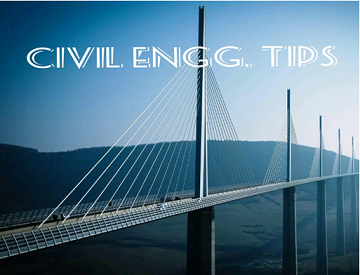Contour Line: The line of intersection of a level surface with the ground
surface is known as the contour line or contour. Contour can also be
defined as a line passing through points of equal reduced levels.
For example, a contour of 100 m indicates that all the
points on this line have an
RL of 100 m.
Contour Interval: The vertical distance between any two consecutive contours
is known as a contour
interval. Suppose a map includes contour lines of 100 m, 98
m, 96 m, and so on. Here the contour interval here is 2 m.
Contour interval generally depends
upon
- The nature of the ground (i.e. whether flat or steep).
- The scale of the map, and
- The purpose of the survey.
Contour intervals for flat country are generally small. The contour interval for a steep slope in a
hilly area is generally greater.
Horizontal Equivalent: The horizontal distance between any two consecutive contours
is known as
horizontal equivalent. It is not constant. It varies
according to the steepness of the ground.
For steep slopes, the contour lines run close together, and
for flatter slopes they are widely spaced.
Uses of Contour Map:
- The nature of the ground surface of a country can be understood by studying a contour map. Hence, the possible route of communication between different places can be demarcated.
- A suitable site or an economical alignment can be selected for any engineering project.
- The capacity of a reservoir or the area of a catchment can be approximately computed.
- The inter-visibility or otherwise of different points can be established.
- A suitable route for a given gradient can be marked on the map.
- A section of the ground surface can be drawn in any direction from the contour map.
- Quantities of earth work can be approximately computed.
Characteristics of Contour:
- The contour lines are closer near the top of a hill or high ground and wide apart near the foot. This indicates a very steep slope towards the peak and a flatter slope towards the foot.
- The contour lines are closer near the bank of a pond or depression and wide apart towards the center. This indicates a steep slope near the bank and a flatter slope at the center.
- Uniformly spaced contour lines indicate a uniform slope.
- Contour lines always form a closed circuit. But these lines may be within or outside the limits of the map.
- Contour lines cannot cross one another, except in the case of an overhanging cliff. But the overlapping portion must be shown by a dotted line.
- When the higher values are inside the loop, it indicates a ridge line. Contour lines cross ridge lines at right angles.
- When the lower values are inside the loop, it indicates a valley line. Contour lines cross the valley line at right angles.
- A series of closed contours always indicates a depression or summit. The lower values being inside the loop indicates a depression and the higher values being inside the loop indicates a summit.
- Contour lines meeting at a point indicate a vertical cliff.









